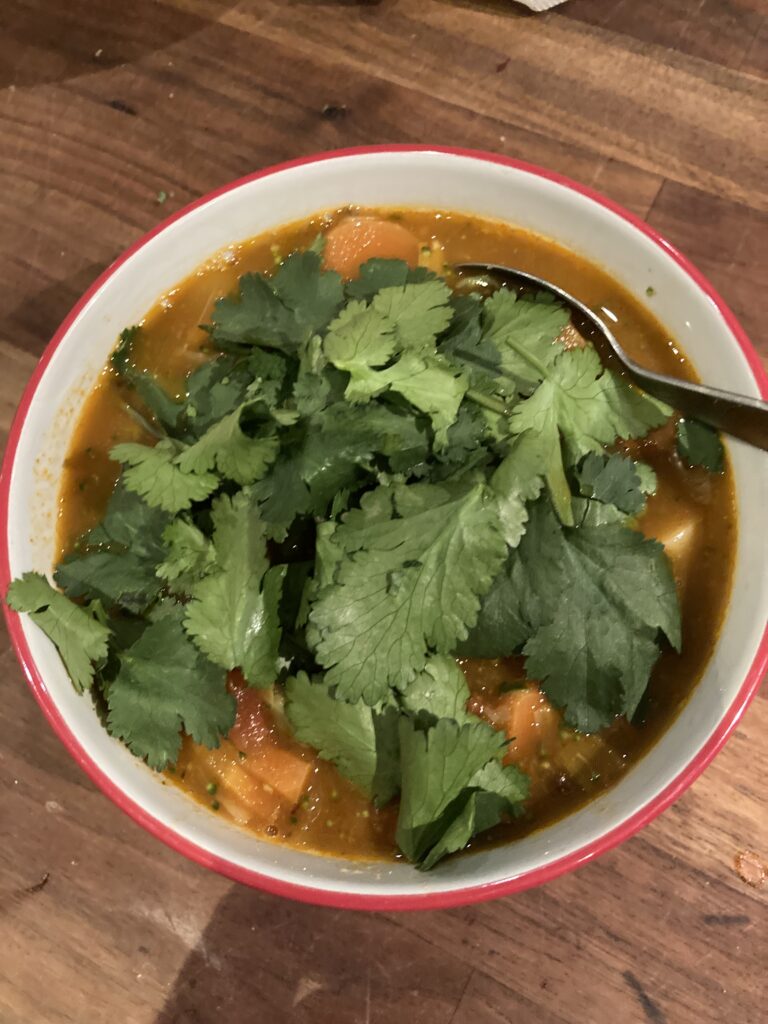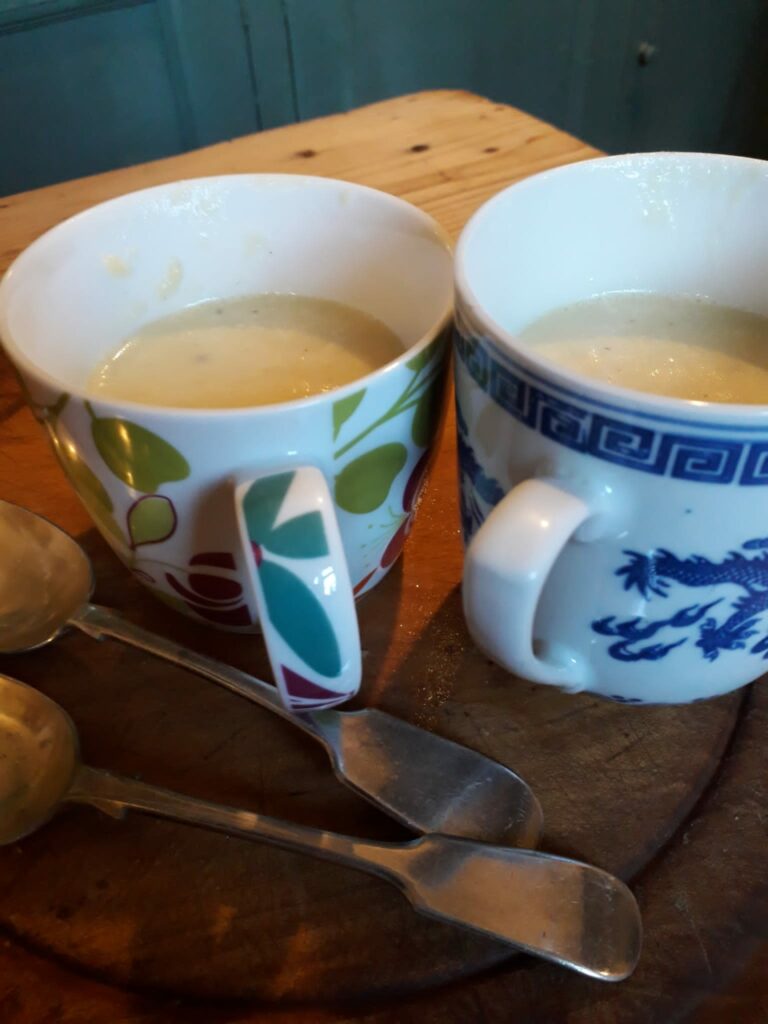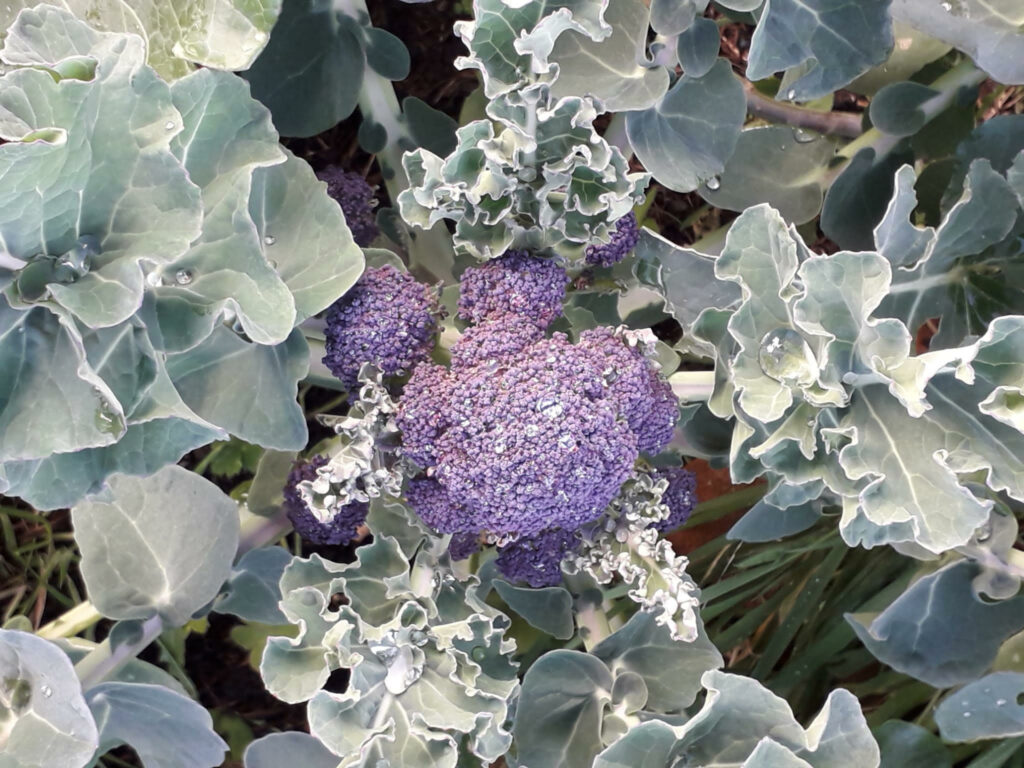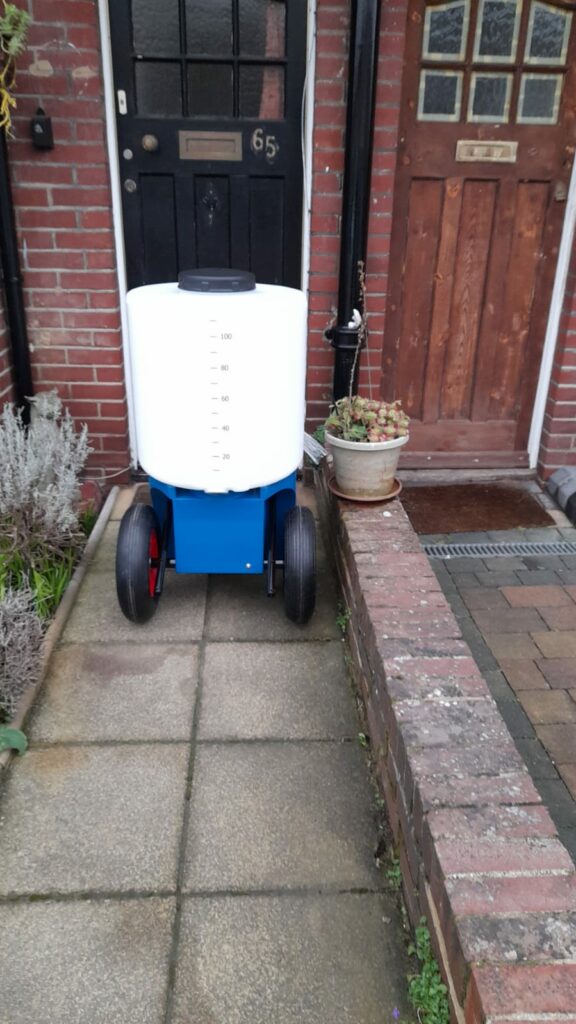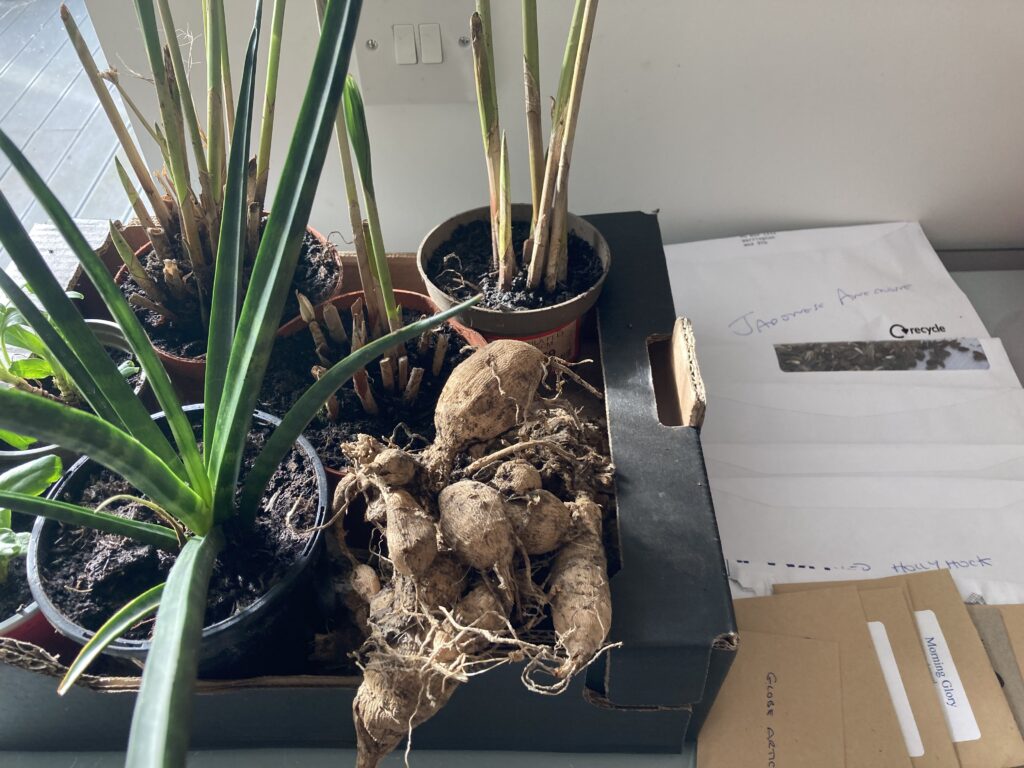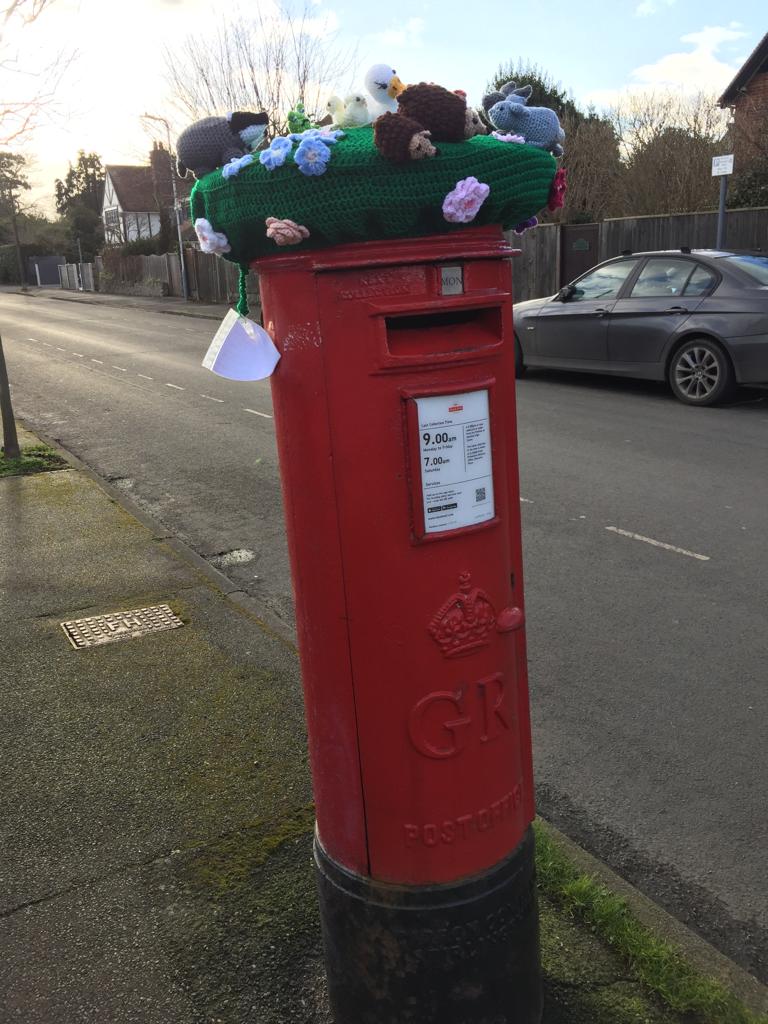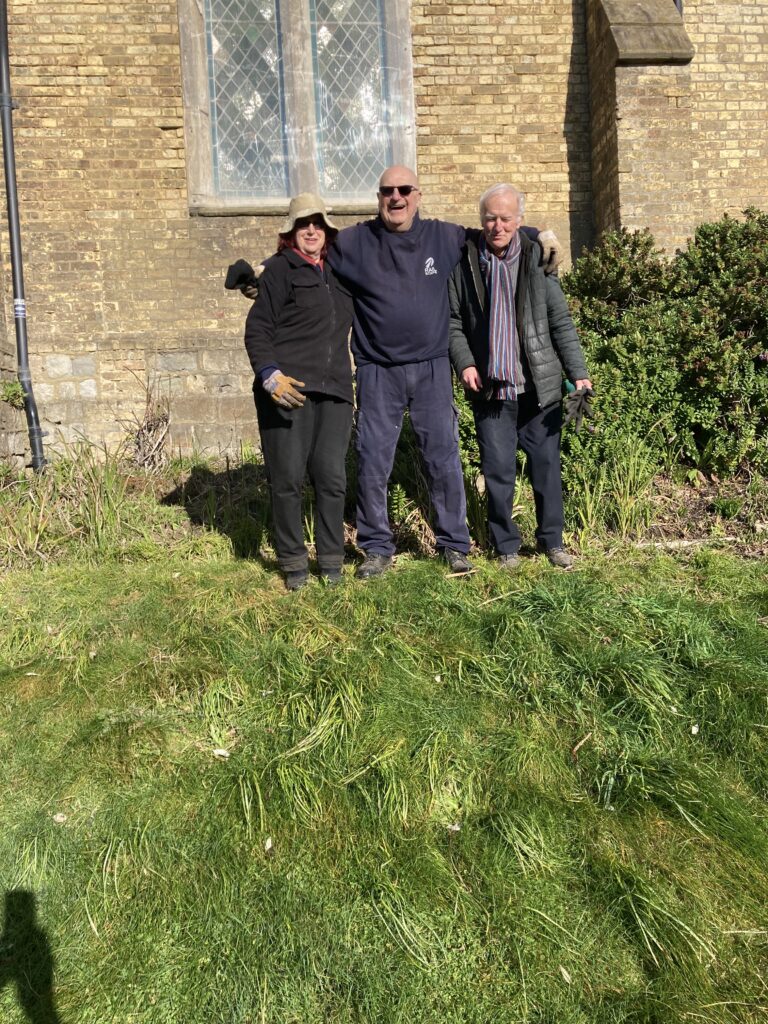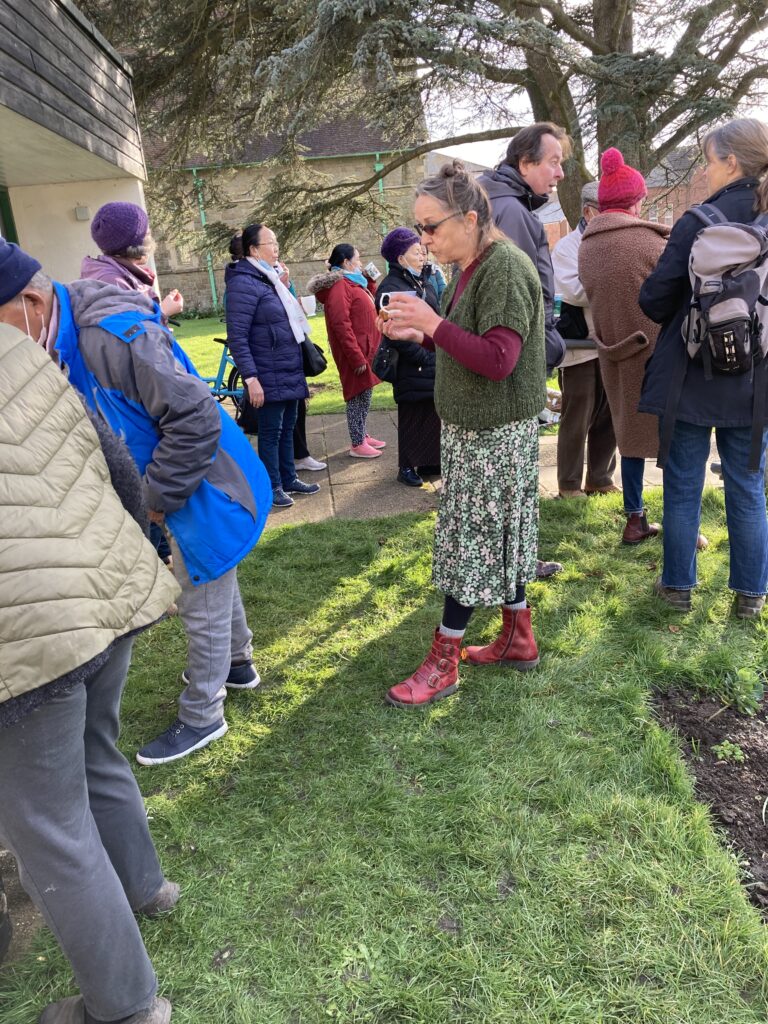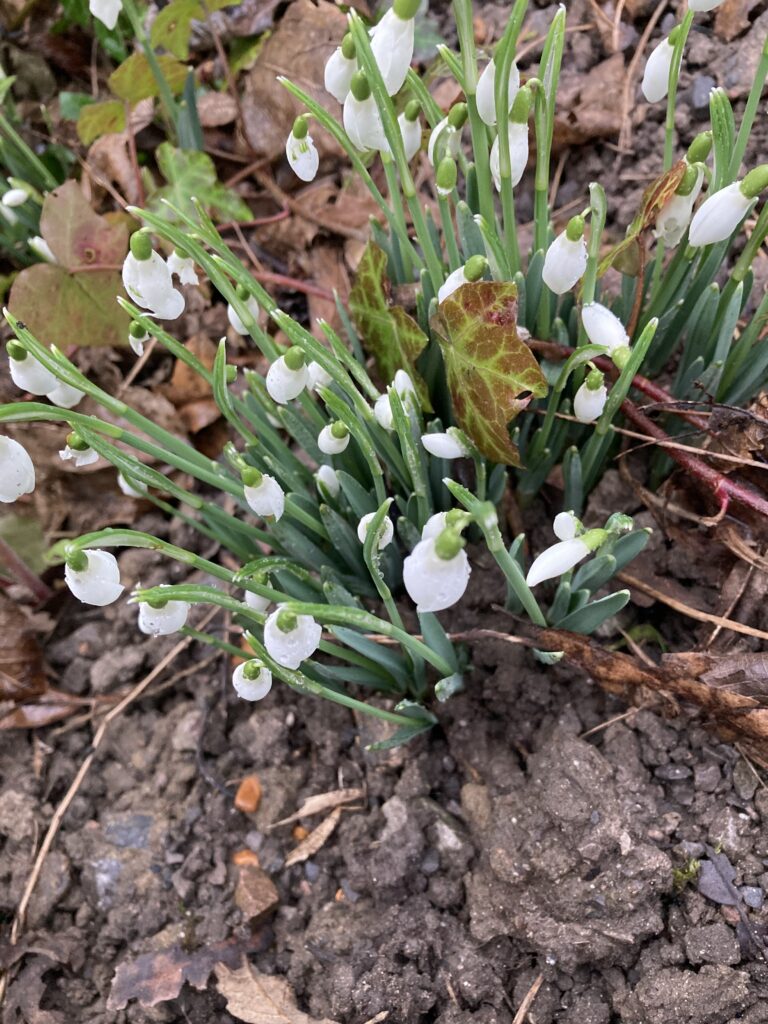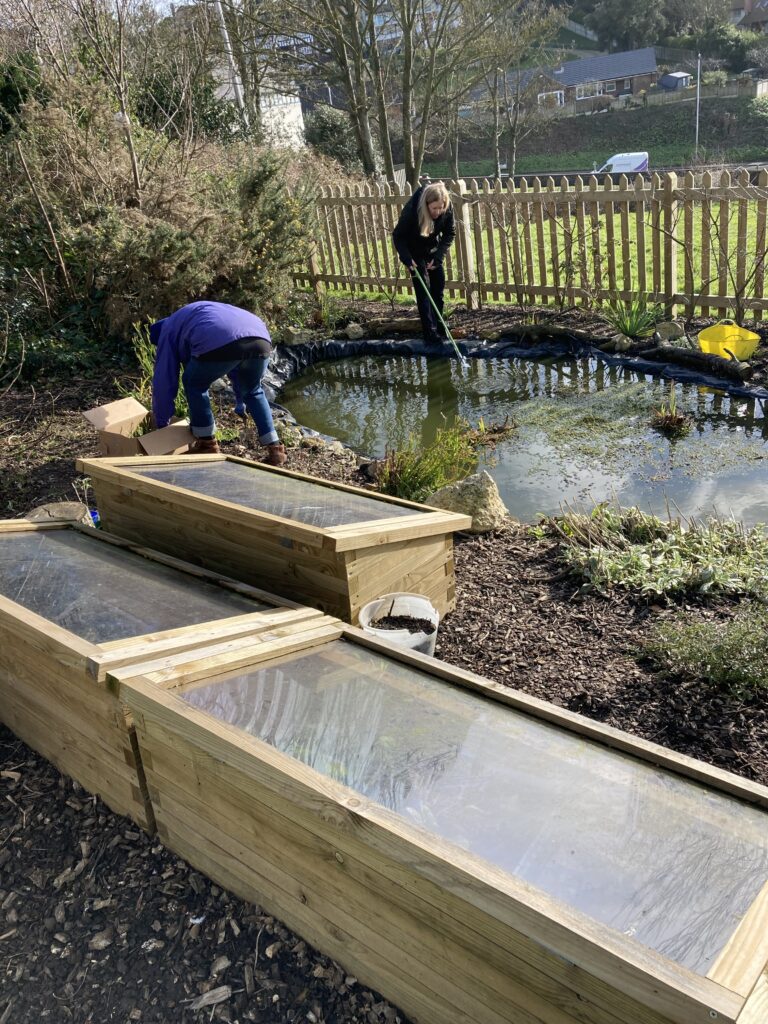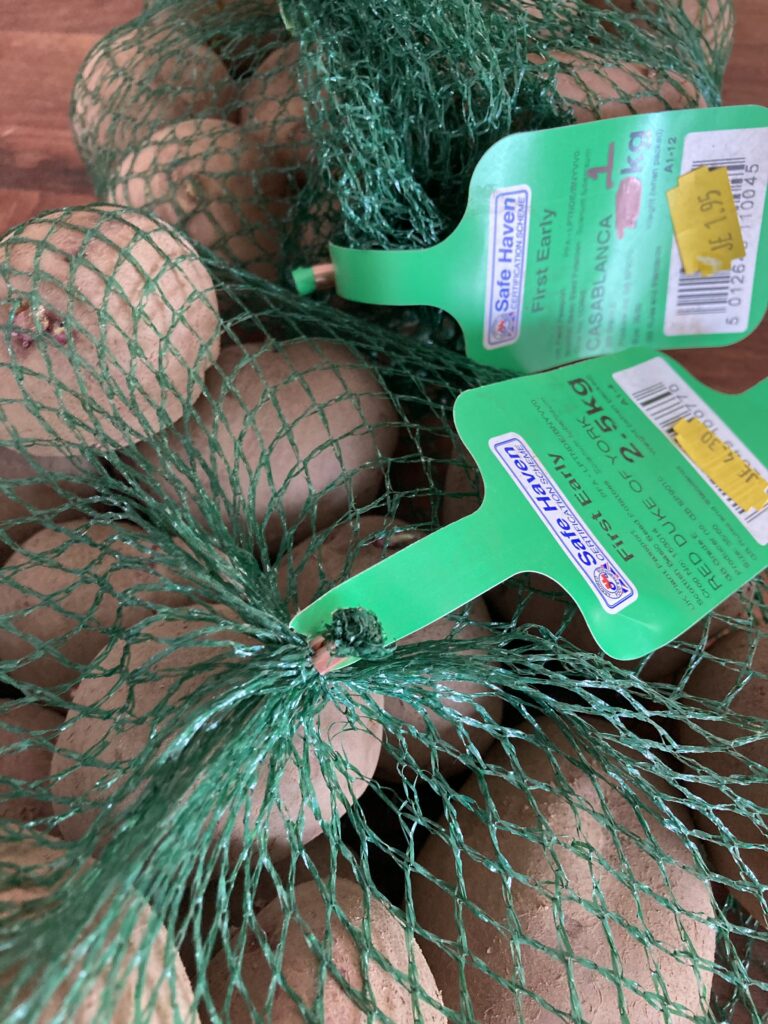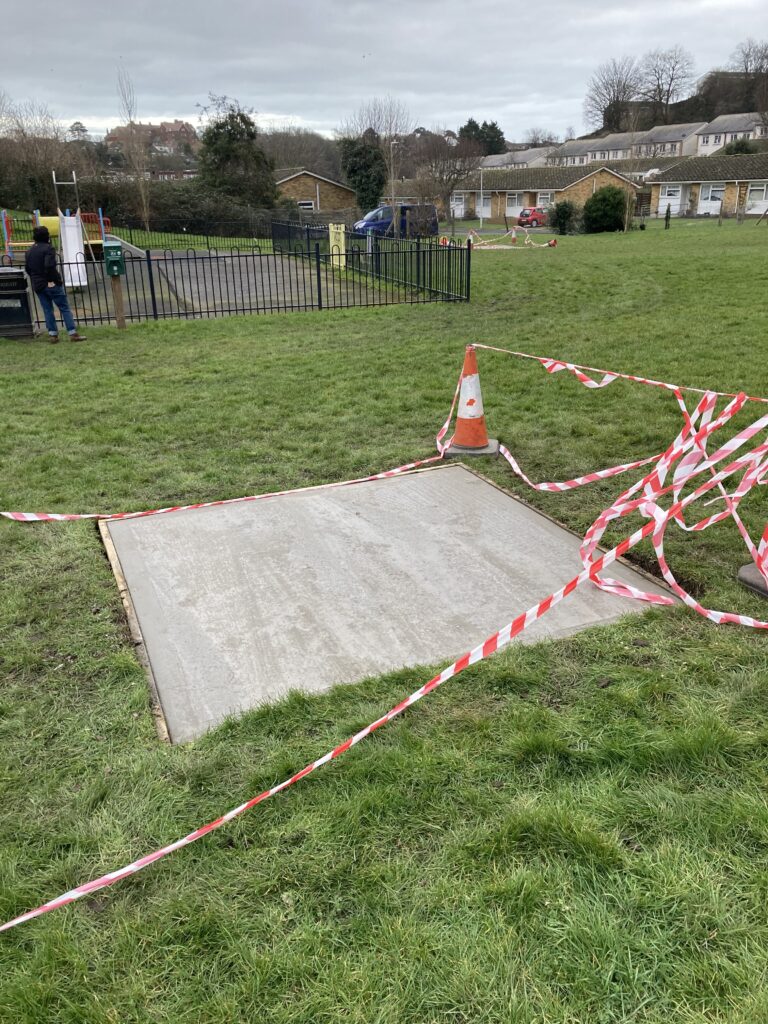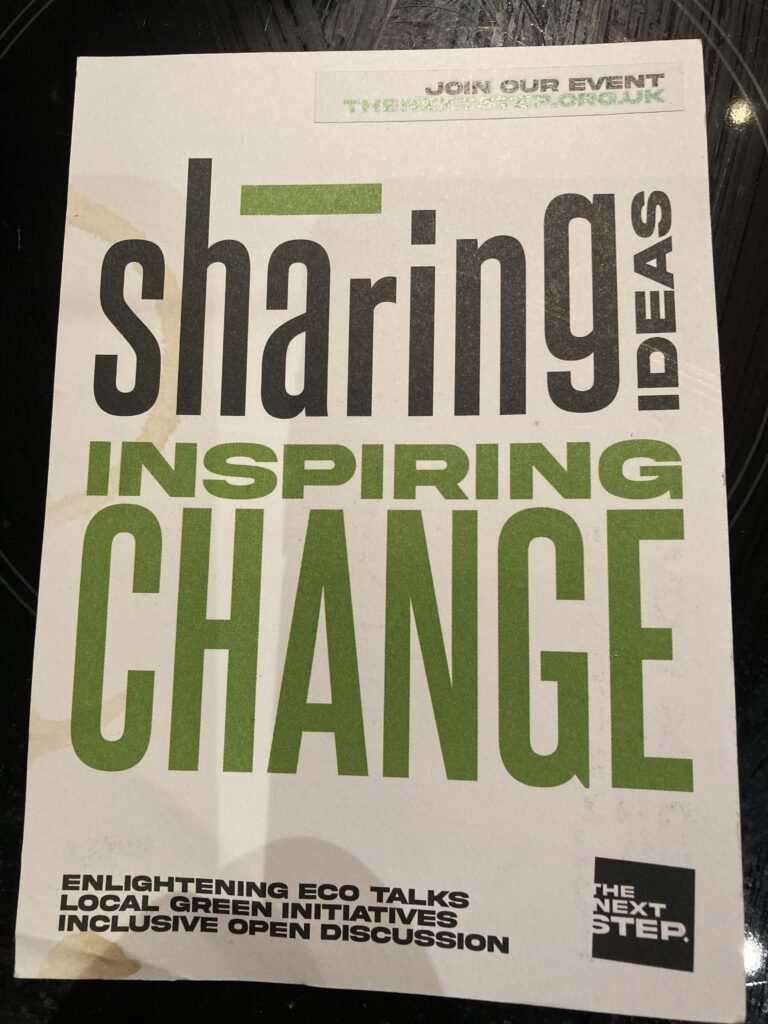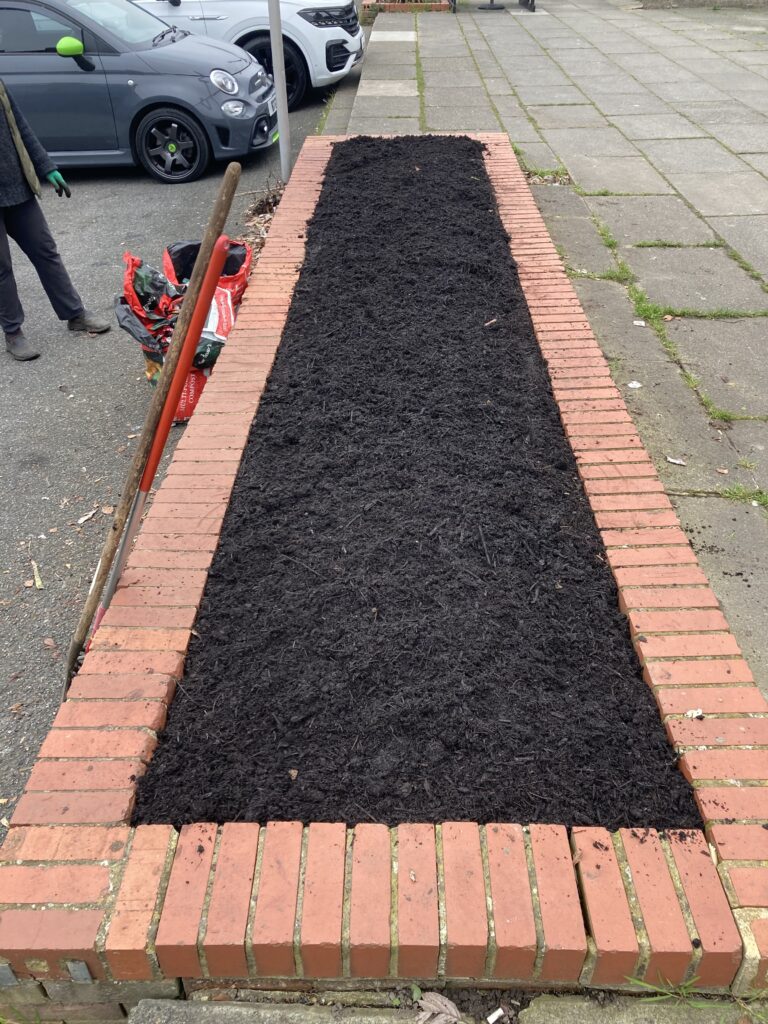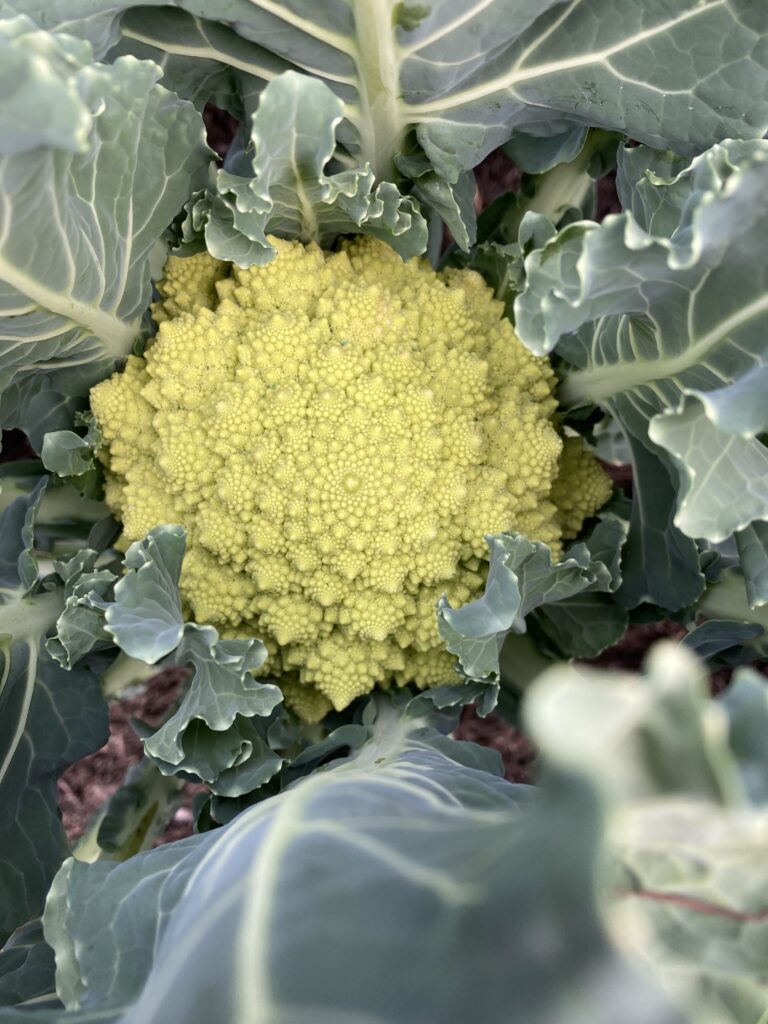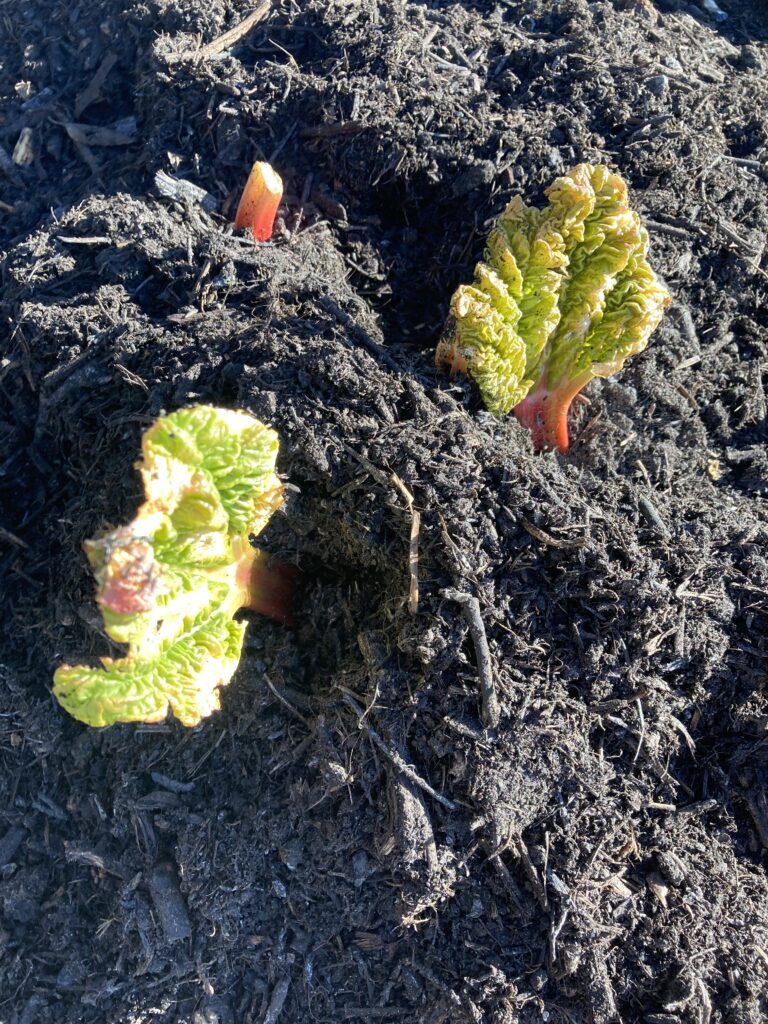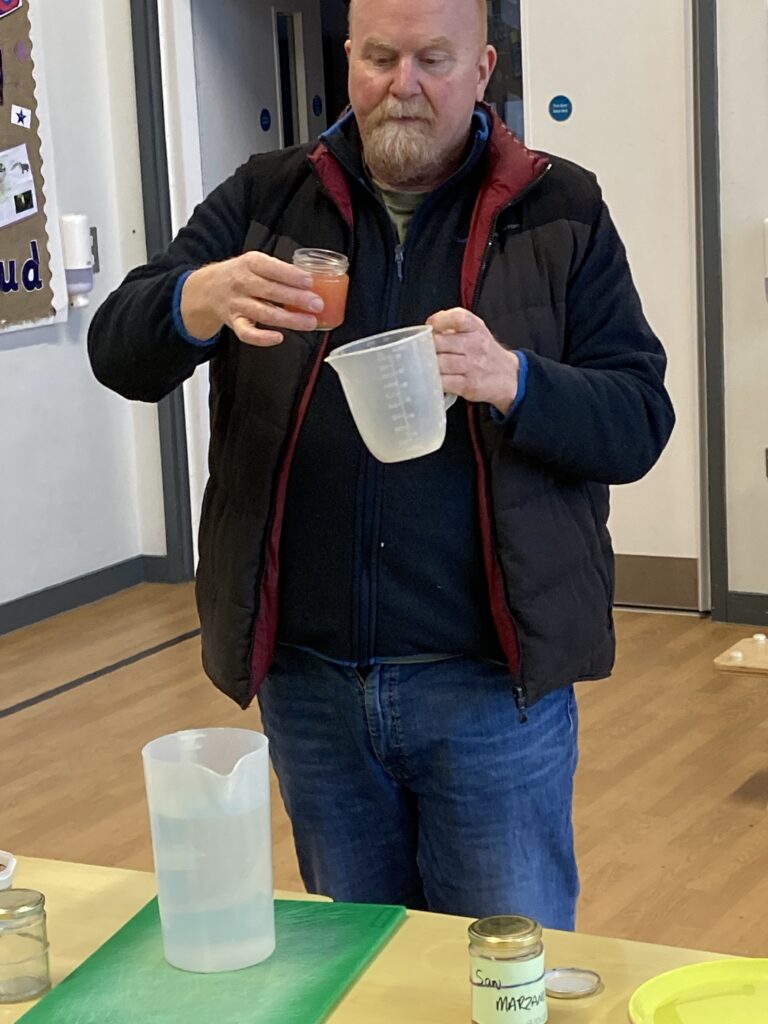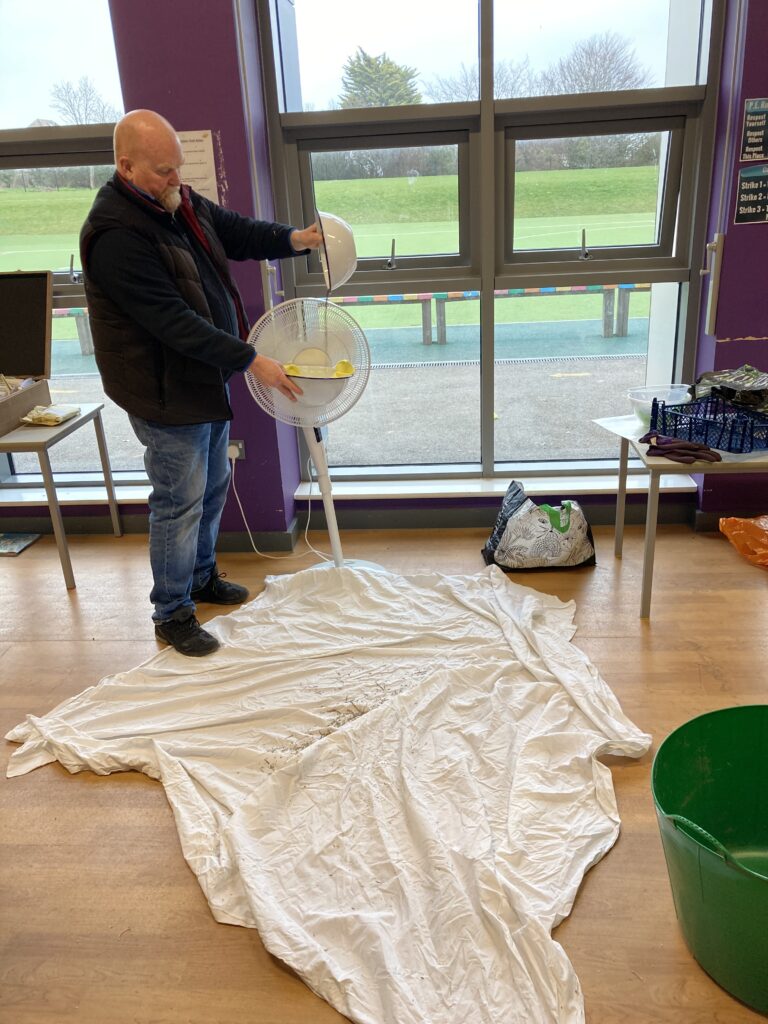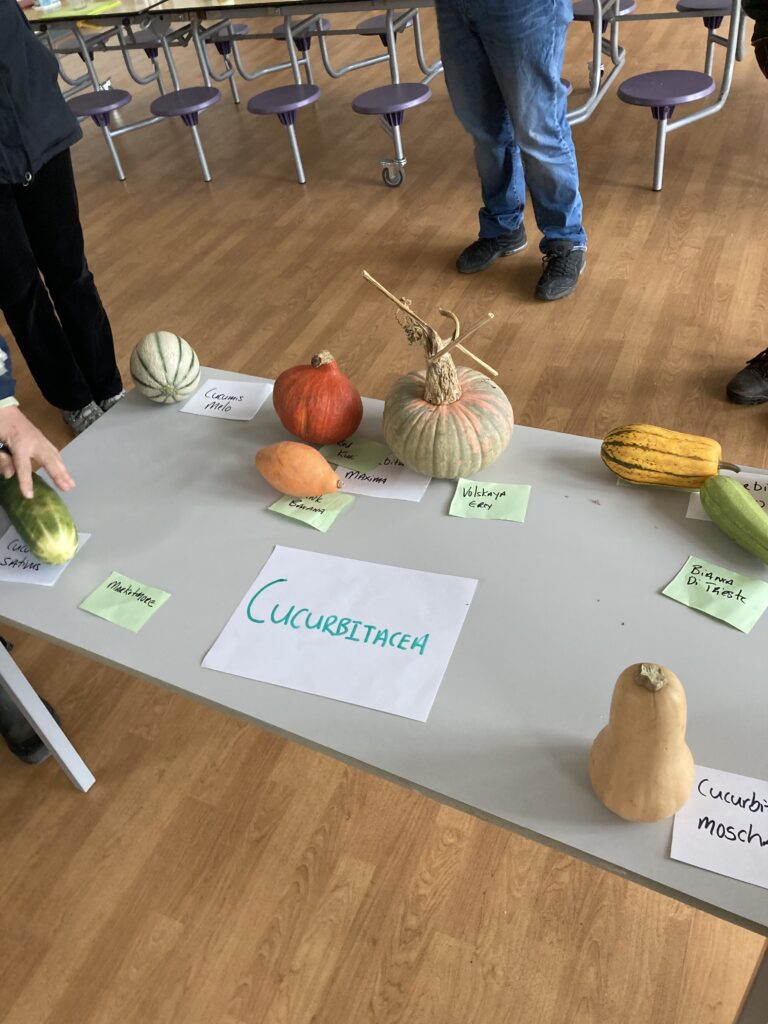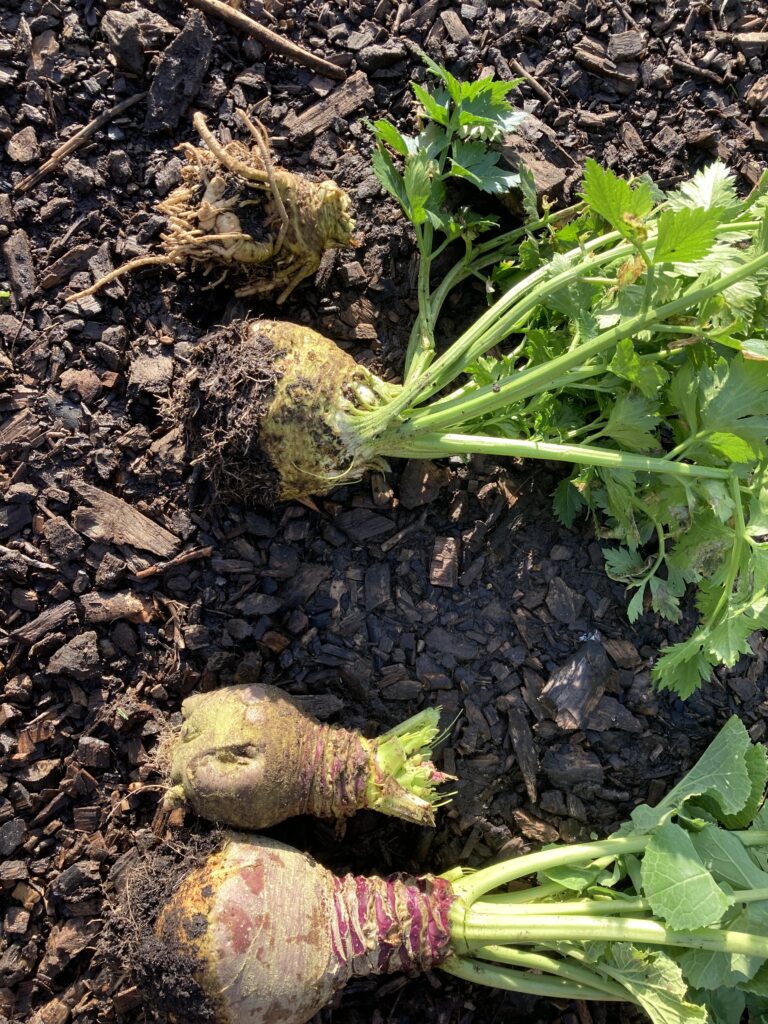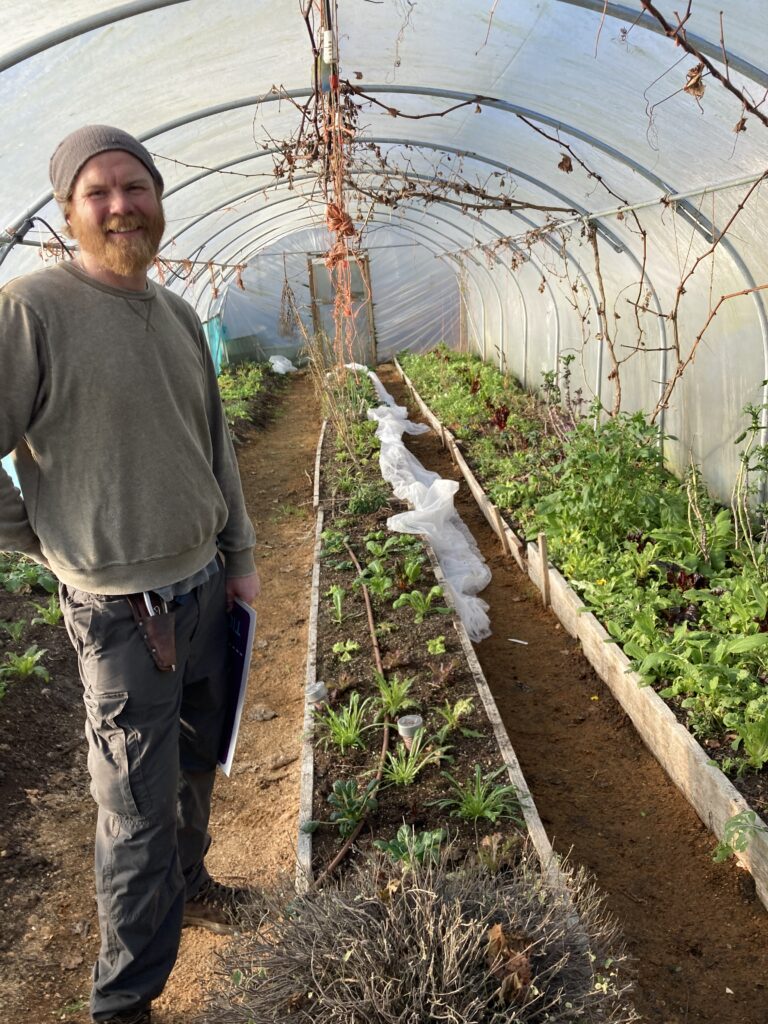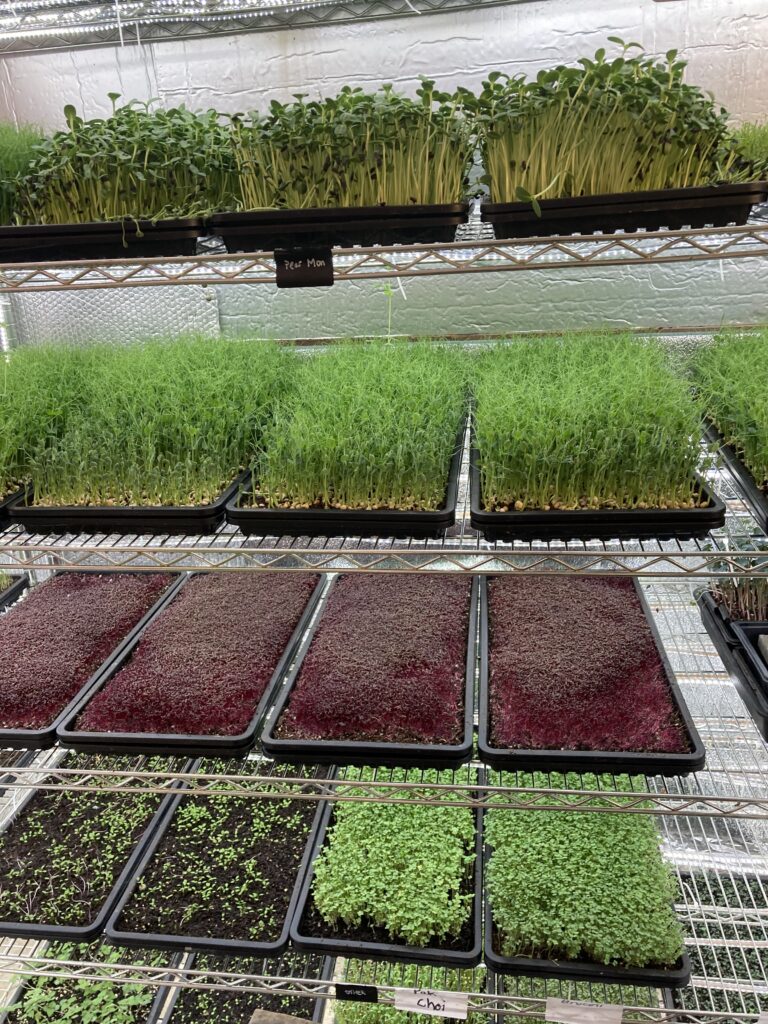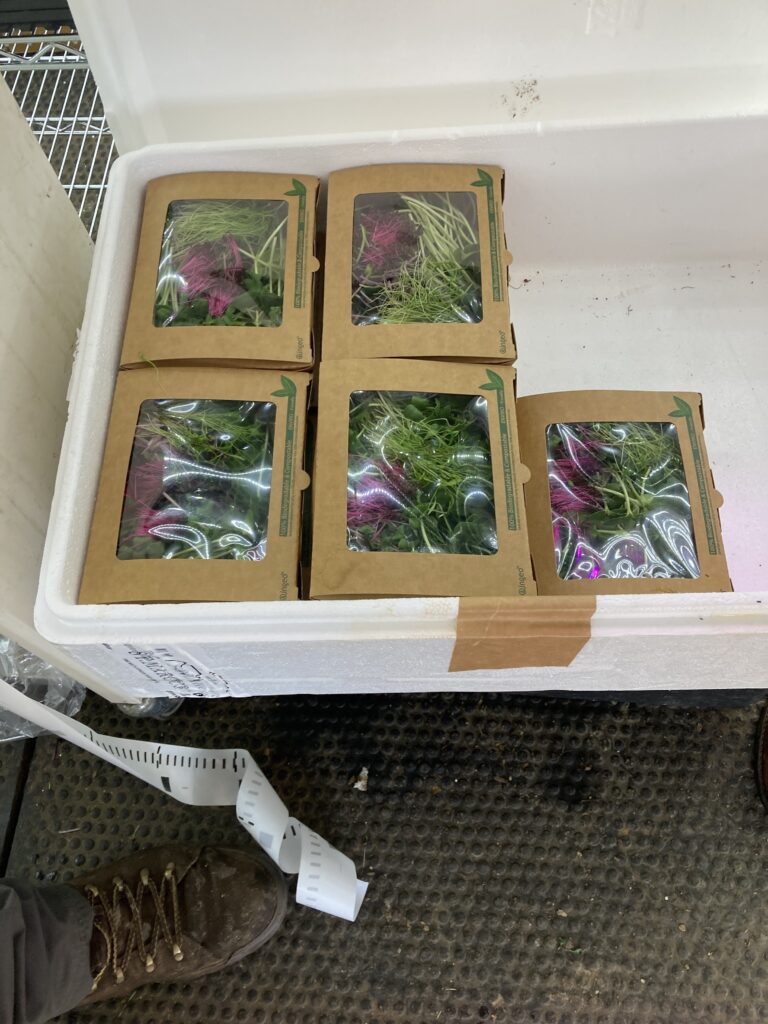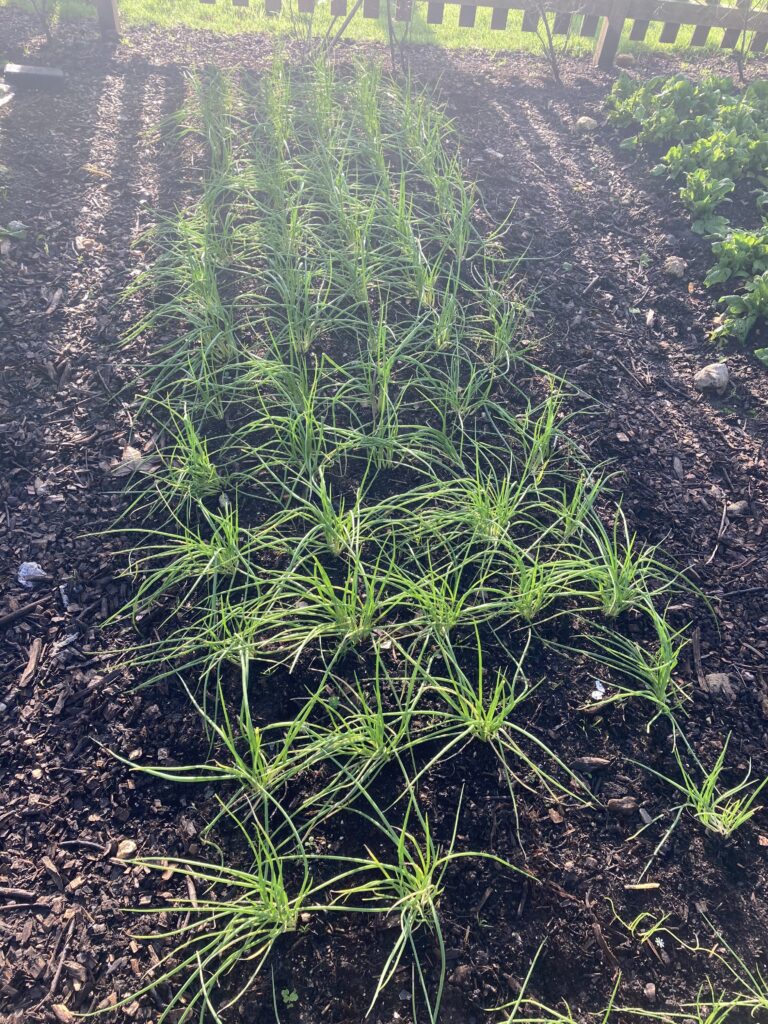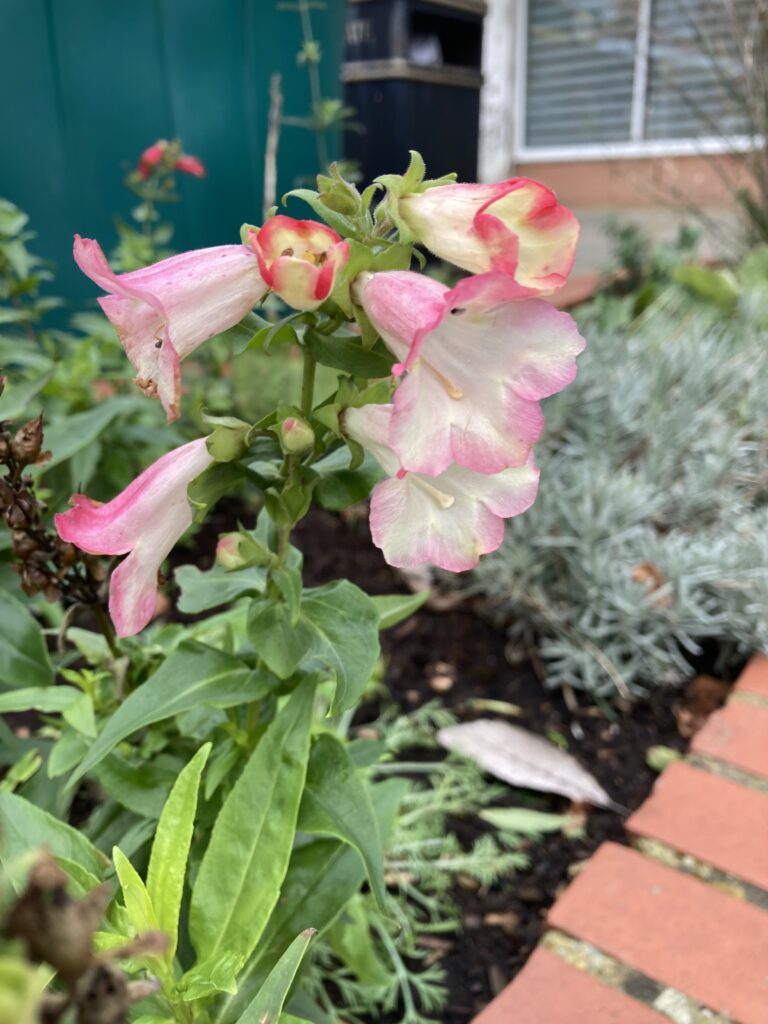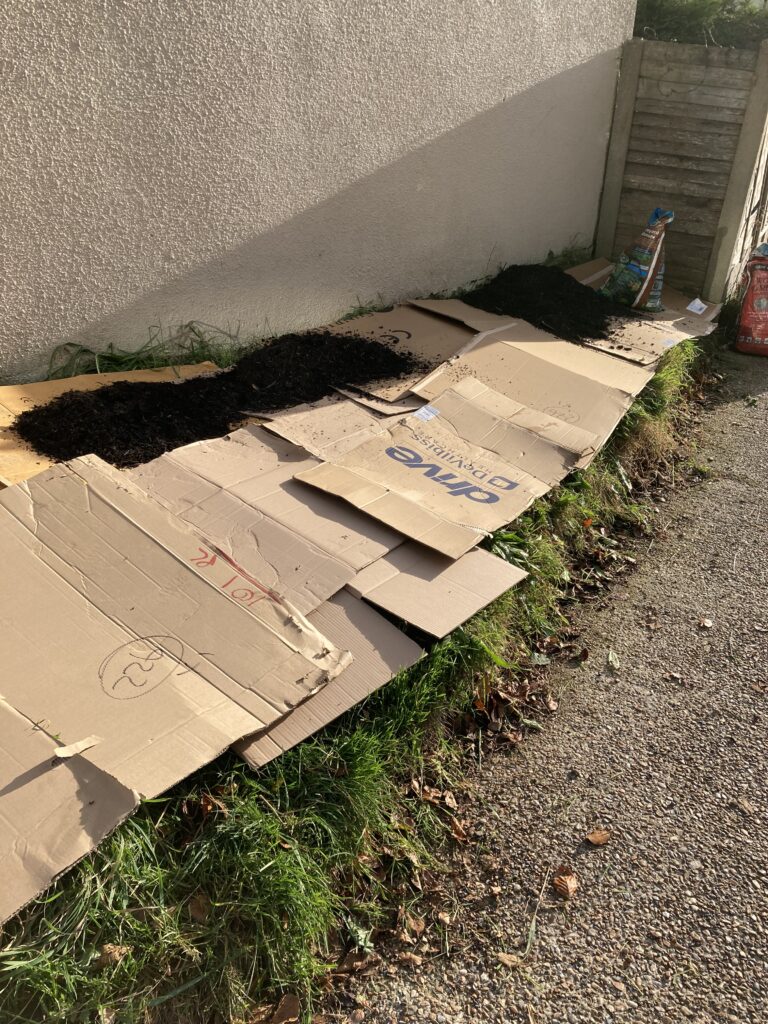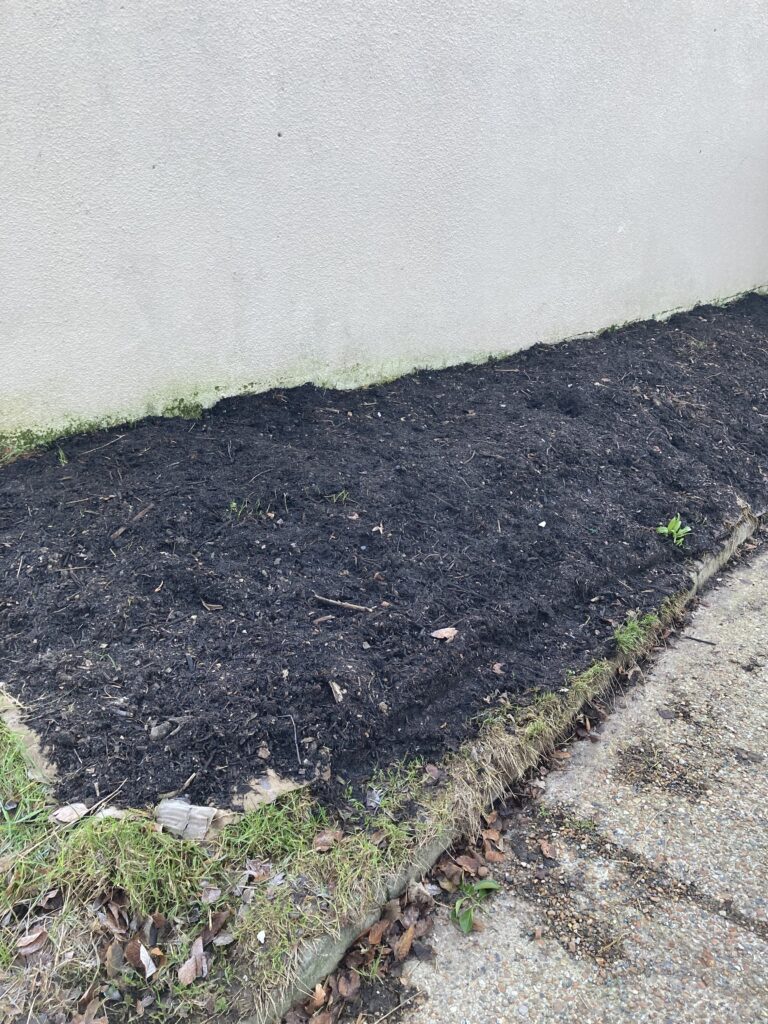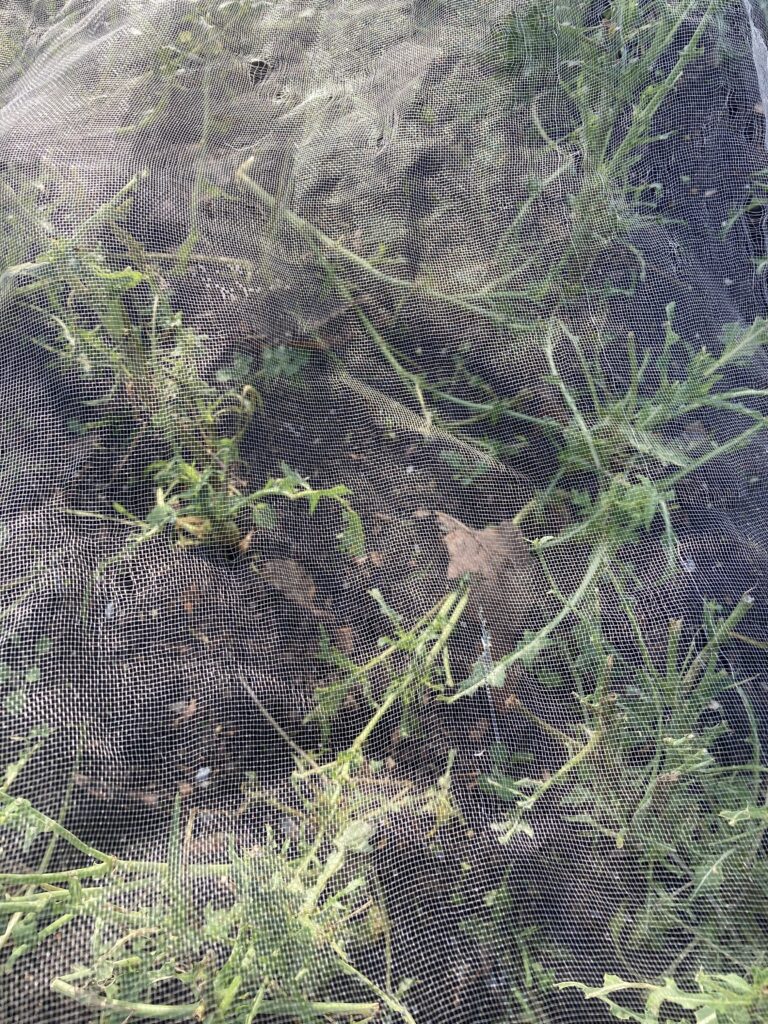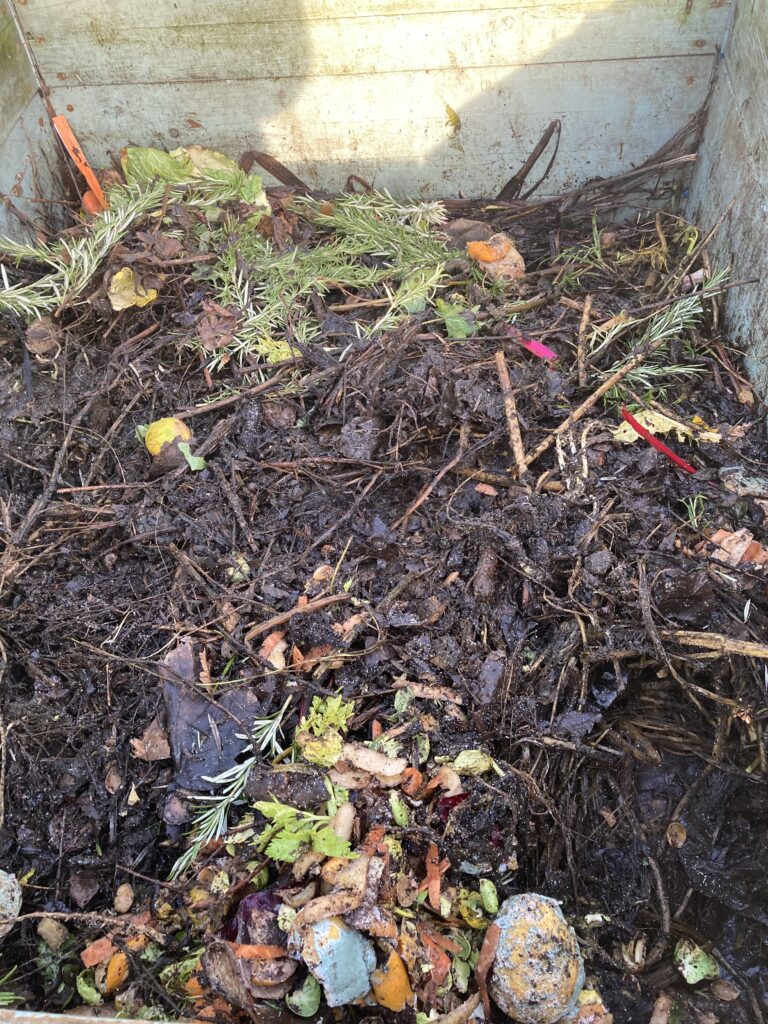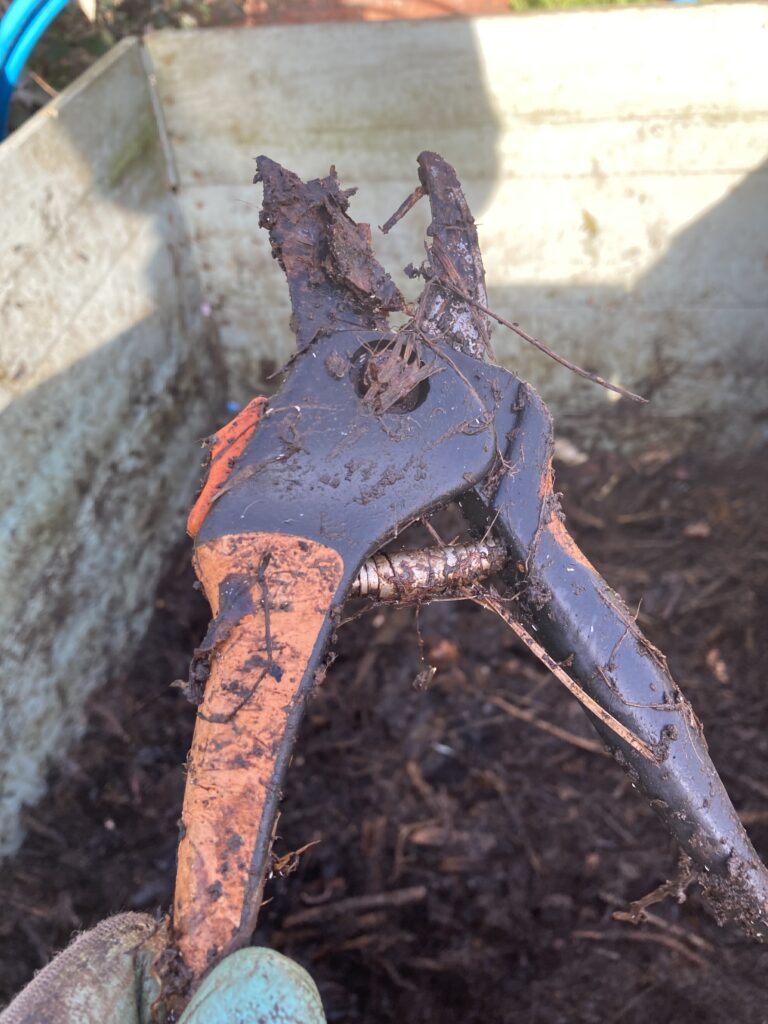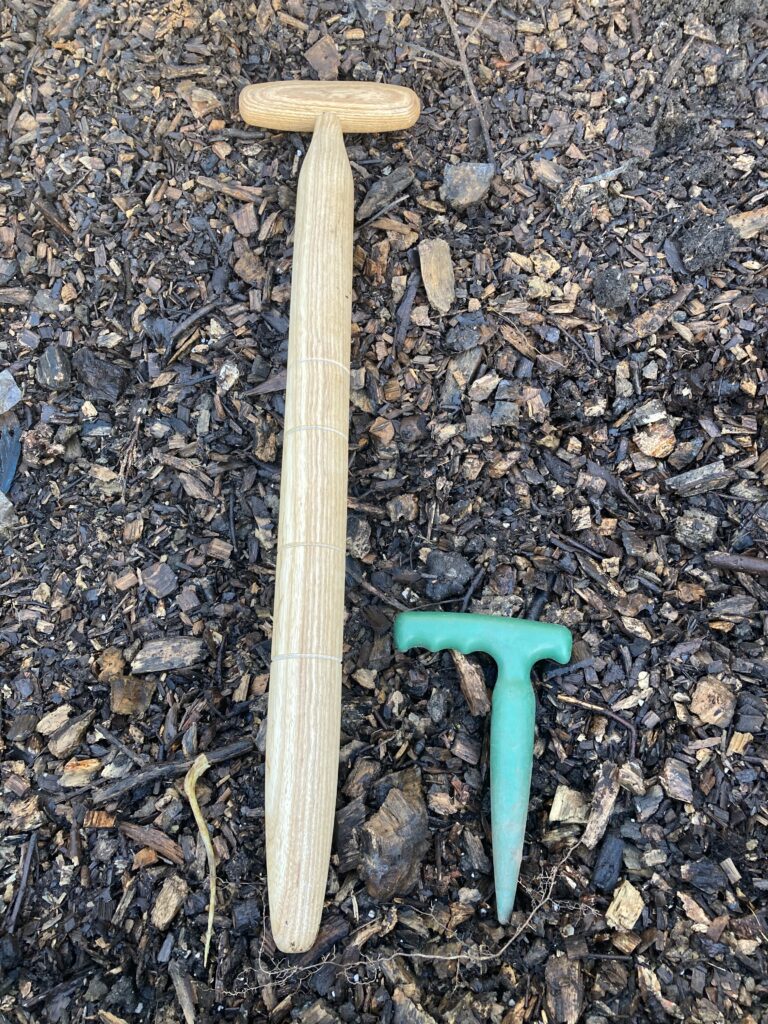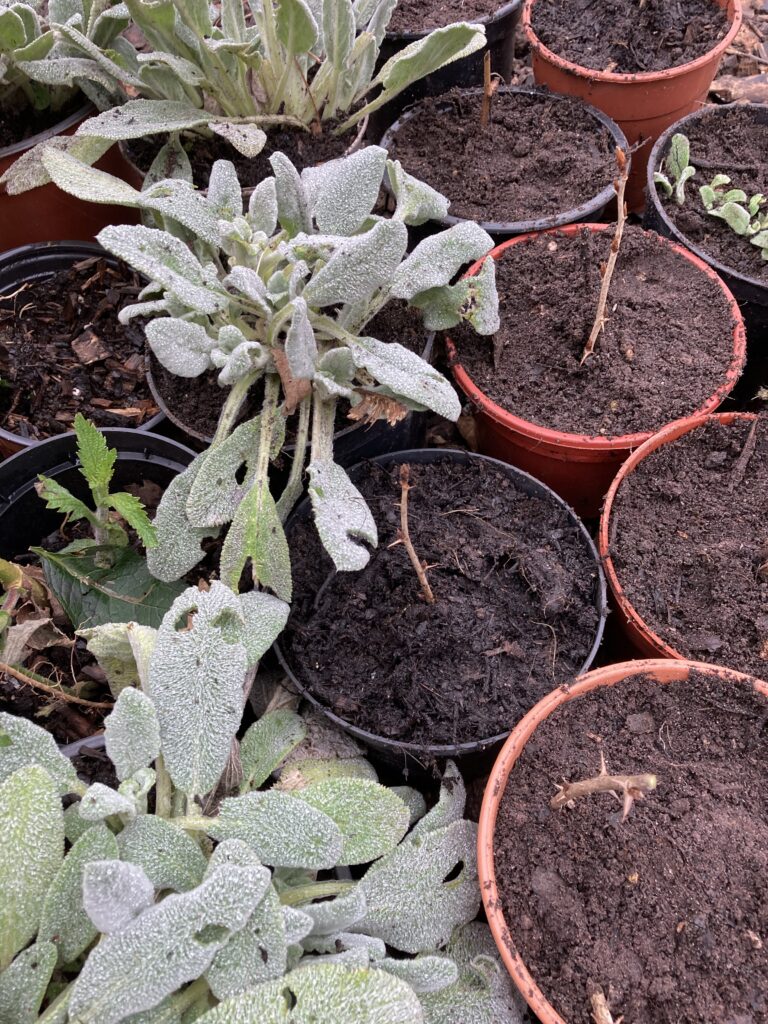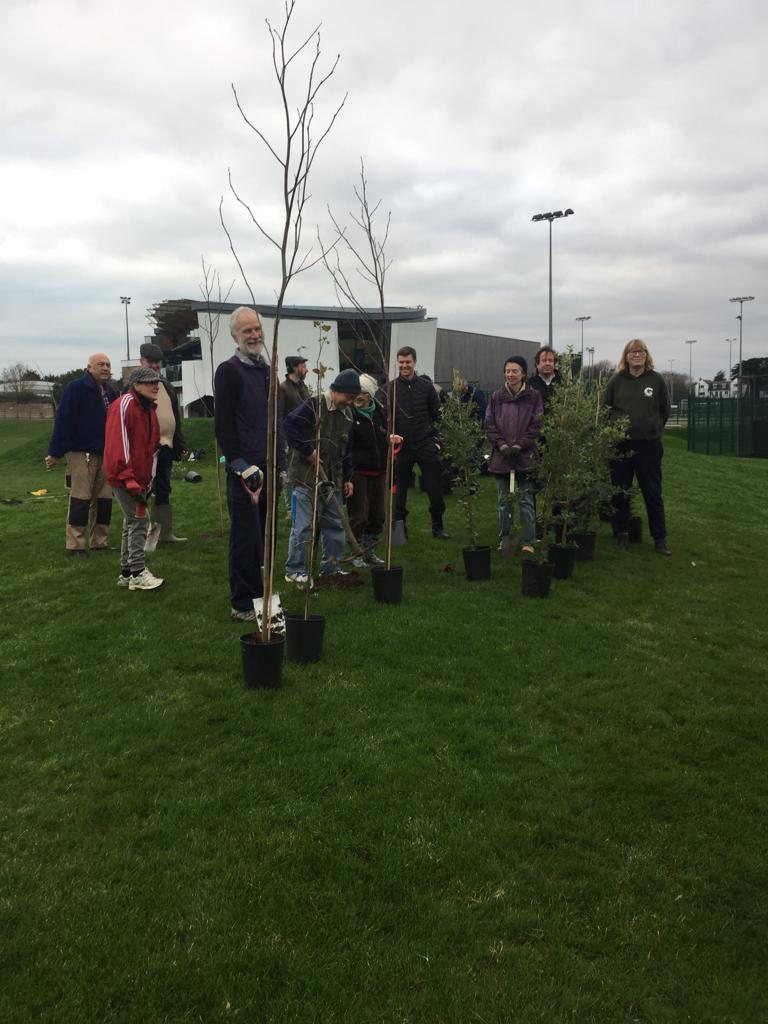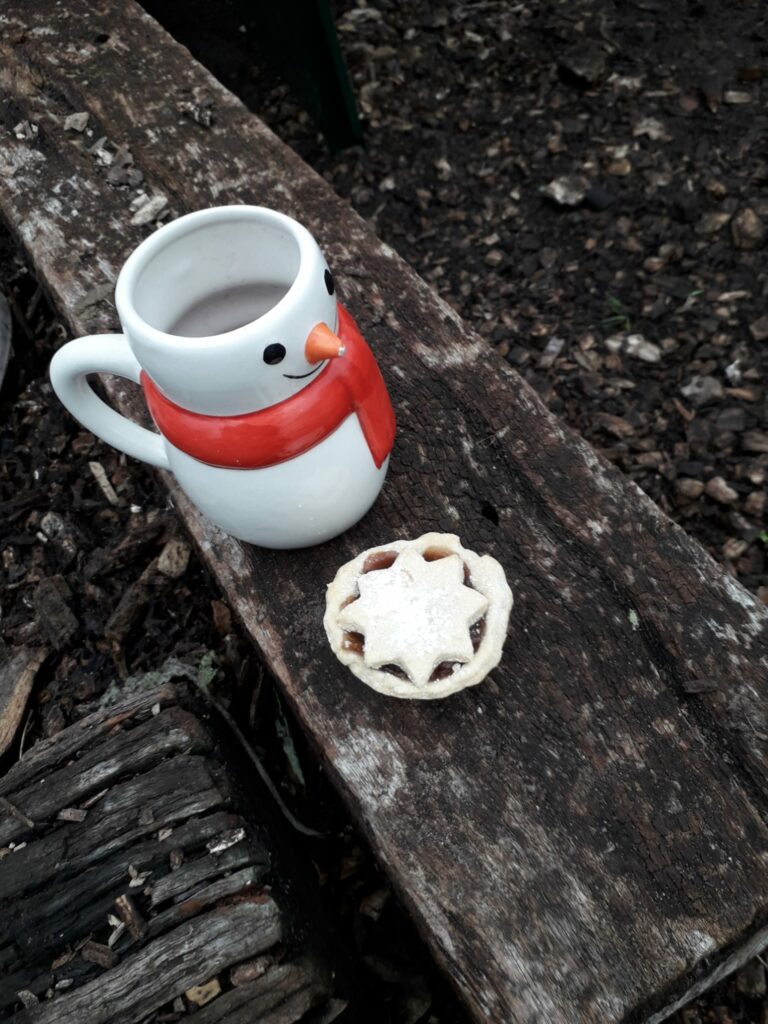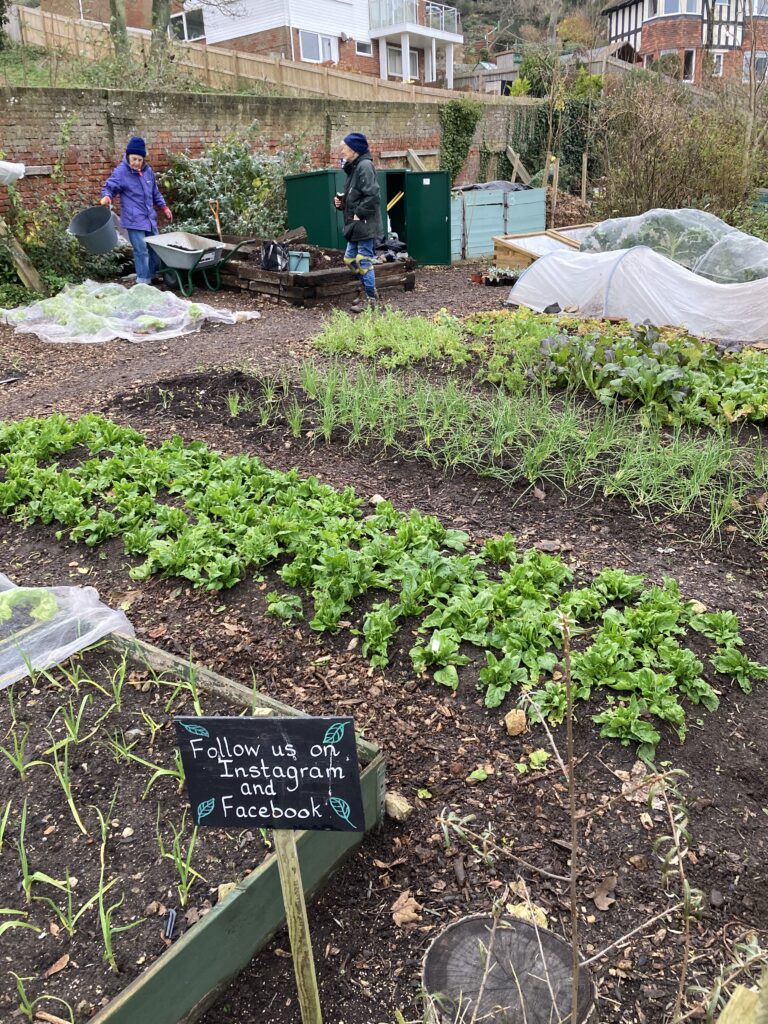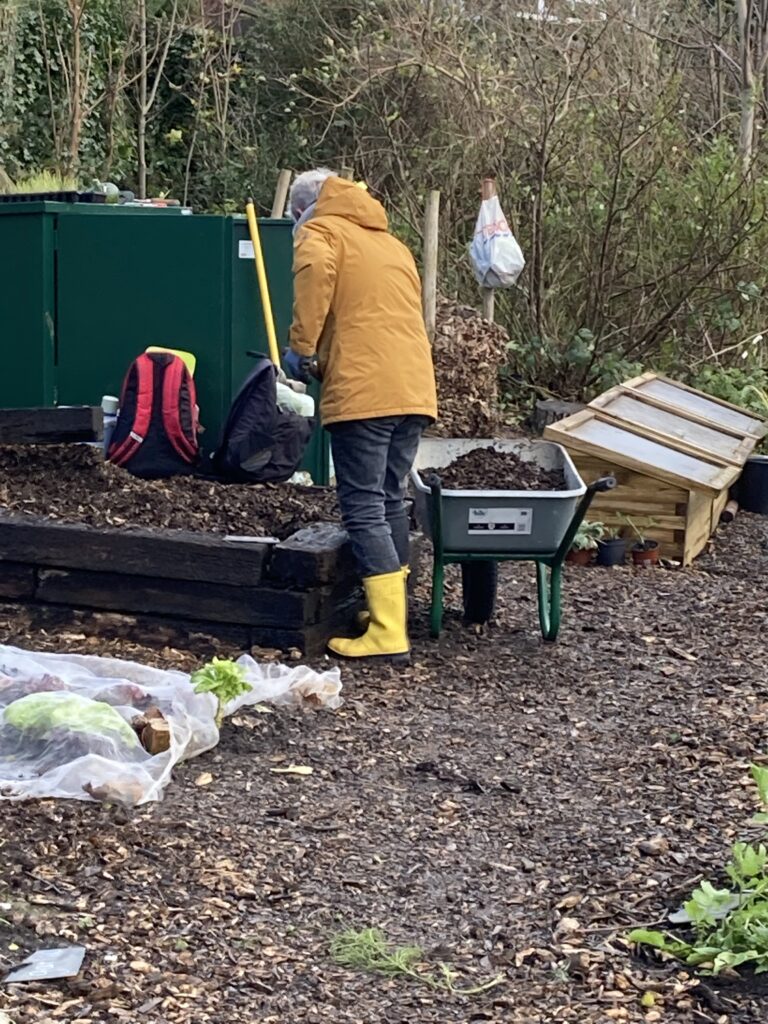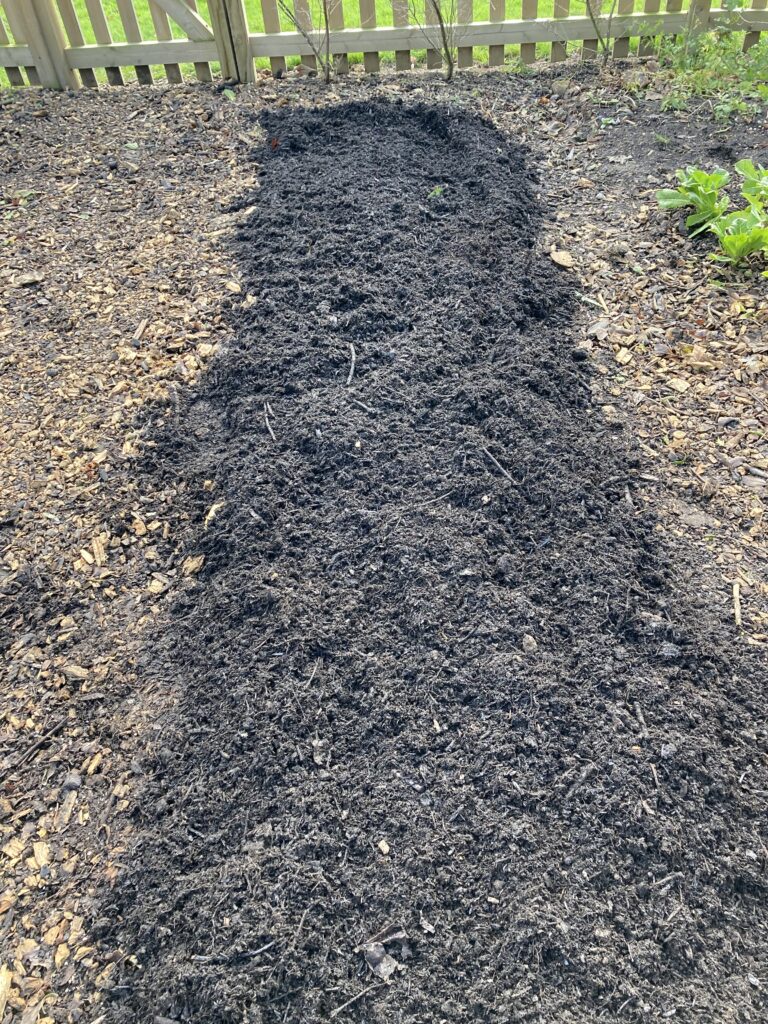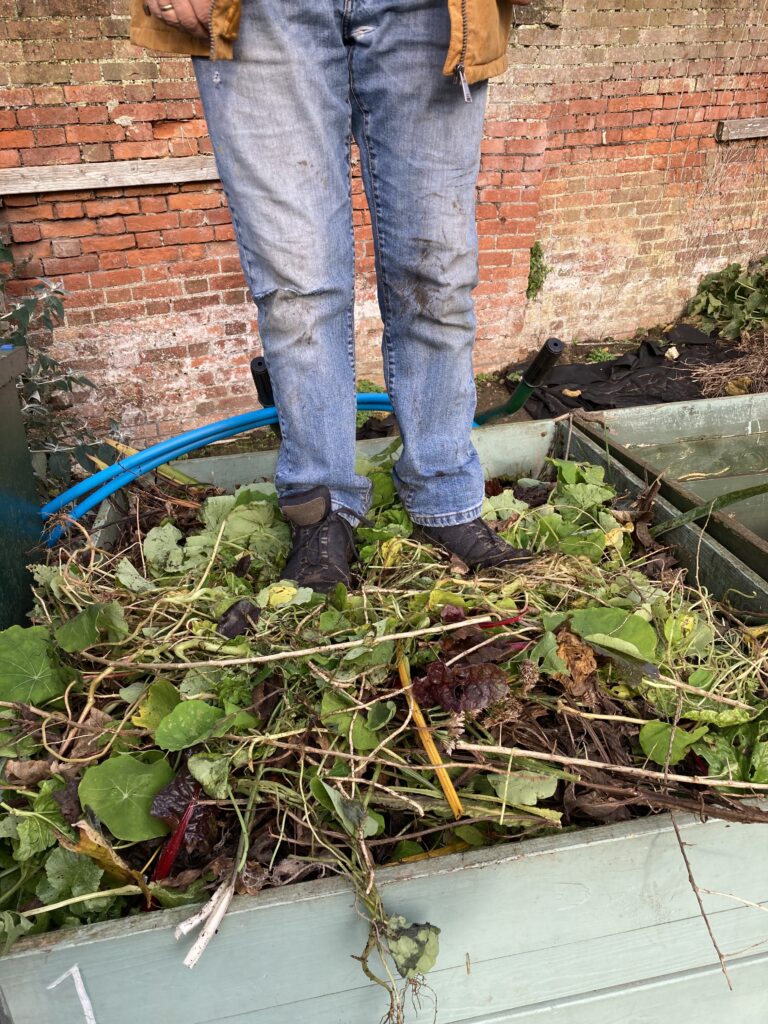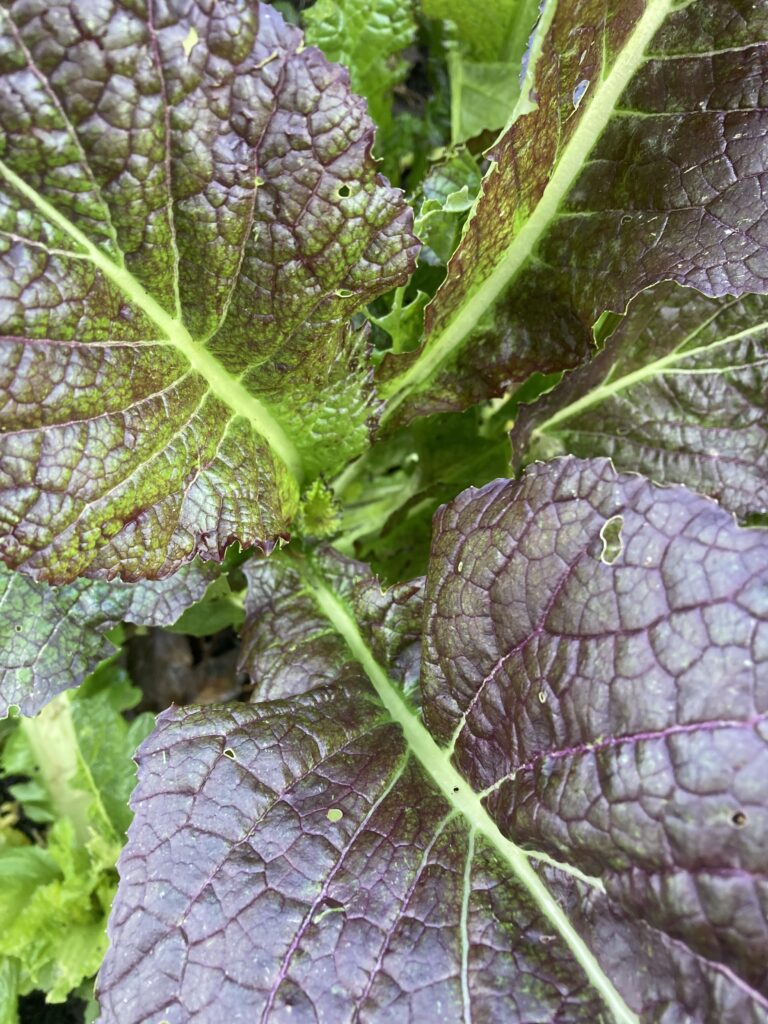It has to be said that in the whole history of this newsletter, since the Sandgate Community Garden began, this one has been the most challenging! Having managed up to now to avoid catching Covid, it has come knocking on my door, and I (Leonie) am just going into my second week stuck at home. Fortunately we have good communication systems amongst our lovely dedicated team of gardeners, and so I have managed to glean all that has been happening without me.
The great thing about knowing so many vegetable growers is that they are experts at making the most delicious soups. Many thanks to Erica for a large pot of spicy veg soup / stew which was just the thing needed at that time, for the shopping delivered to the door, and all the messages offering help, it was most appreciated and just confirms that our community is truly amazing.
Parsnip soup made from our own garden parsnips was again causing some envy. Knowing that we are frequently asked for the recipes, the maker Rosie, has already obliged:
Parsnip Soup Recipe.
– 3 parsnips
– 600 ml water
– Chicken stock cube
– Knob of butter
– Milk to taste
Prepare and chop parsnips. Fry for a short time in butter. Add chicken stock. When soft liquidise, add milk, salt, pepper.
As I used community garden parsnips I relied on their flavour so didn’t add an onion or herbs/spices. Recipe approx amounts.
St Valentine’s Day marks the beginning of the seed sowing for the year, when peas for shoots, coriander, parsley, spinach, cabbage, spring onions, broccoli and radishes got sown indoors to germinate in modules or seed trays. This year we have at least a dozen varieties of lettuce which will be interesting. The broccoli failed to germinate at all however the seed packet was out of date and this time the gamble of giving them a go, failed. There is still plenty of time to try again.
Rosie has been highly delighted with her homegrown purple sprouting broccoli this week and sent a picture, shown below. It can be true that much of growing anything is based on luck, faced with weather conditions, insects, and hungry pigeons; however the results are looking pretty good. Her variety is earlier than ours at Enbrook Park, which is not due to be ready to pick until April. Of course, if you have the time to plan, plus plenty of room it is possible to have broccoli in season all year round.
The Incredible Edible group have recently bought a 110 litre water bowser on large wheels which can be pulled by hand along the street to water planters. It will be very interesting to find out just how manoeuvrable and easy to use this thing will be, as we always have issues in getting enough water to some of the other garden areas outside of Enbrook Park and have so far had to rely on carting 20 litre containers full of water about. The only foreseen problem is that Sandgate has so many hills and a full bowser might possibly be something that only the strongest can manage. We are looking forward to giving it a go.
I have been saved the misery of having to see the garden at Enbrook Park the day after storm Eunice which struck on Friday. It seems there were no broken trees or branches this time, but naturally the fleece and mesh covers got a good battering as did many of the plants. All was put right on Saturday morning by our gardeners, however the pond has got more things floating in it than it should, and it is not very clear if high winds are set to return over the next few days. Fingers are crossed that the very worst has now passed.
The beekeepers have just been celebrating the fact that the bees at the garden hives are able to forage and collect pollen now that spring is on the horizon.
What’s next?
- Sow broccoli seeds
- Sow more radishes
- Sort out the pond
- Check on all the other growing areas for any damage
